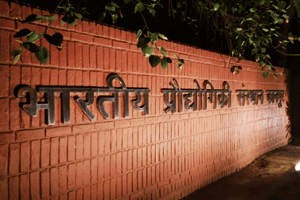Introduction
IITs were first introduced in the year 1945 in a report by Sh. N.M.Sircar, who was one of the members of Education on the Viceroy’s Executive Council. Following his recommendations, the very first Indian Institute of Technology was established in 1950 in Kharagpur. In his report, Shri Sircar had suggested that such Institutes should even be started in several parts of the country. The Government considered these suggestions of the Sircar Committee and decided to open more IITs with the assistance of friendly countries. The first offer of help came from the USSR who agreed to collaborate in the establishment of an Institute through UNESCO at Bombay. And then the Institutes of Technology at Madras, Kanpur, and Delhi are established with collaborations with West Germany, the USA, and the UK respectively. Indian Institute of Technology, Guwahati was established in 1995 and after that, the University of Roorkee was converted into an IIT in 2001.
The Government of India negotiated with the British Government for collaboration in setting up an Institute of Technology in Delhi. The British Government agreed to such a collaboration but were inclined initially to begin it in a modest way. After that, It was agreed that a College of Engineering & Technology should be established in Delhi with their assistance. Trust by the name of Delhi Engineering College was established with the assistance of the united kingdom Government and so the Federation of British Industries in London Later H.R.H. Prince Philips who was a Duke of Edinburgh, during his visit to India, laid the foundation of the College at Hauz Khas, New Delhi on January 28, 1959.
The first admissions were made in 1961. The students were asked to report the IIT on 16th August 1961 and therefore the College was formally inaugurated on the 17th of August 1961 by the Minister of Scientific Research & Cultural Affairs named Humayun Kabir. The IITs offer study programs in a number of Engineering, Scientific and Technological disciplines.
There are 23 IITs in India, out of which 11 are having departments for teaching, learning and research offering B. Tech., B. Des., M. Tech., Ph.D., and M.Sc. programs. Within a short span of time, an institute had come up with the required infrastructure for carrying out advanced research and has been equipped with state-of-the-art scientific and engineering instruments named IIT Guwahati.
There are 23 IITs opened till now. Out of which 5 were opened in 2016.
Here is the list of the IITs are in India with their dates of establishment:-
- IIT Kharagpur 1951
- IIT Bombay 1958
- IIT Madras 1959
- IIT Kanpur 1959
- IIT Delhi 1961
- IIT Guwahati 1994
- IIT Roorkee 2001
- IIT Ropar 2008
- IIT Bhubaneswar 2008
- IIT Gandhinagar 2008
- IIT Hyderabad 2008
- IIT Jodhpur 2008
- IIT Patna 2008
- IIT Indore 2009
- IIT Mandi 2009
- IIT (BHU) Varanasi 2012
- IIT Palakkad 2015
- IIT Tirupati 2015
- IIT Dhanbad2016
- IIT Bhilai 2016
- IIT Goa 2016
- IIT Jammu 2016
- IIT Dharwad 2016
When were IITs introduced in India?
IITs were first introduced in the year 1945 in a report by Sh. N.M.Sircar, who was one of the members of Education on the Viceroy’s Executive Council.
Where was the first IIT established?
The very first Indian Institute of Technology was established in 1950 in Kharagpur according to the recommendations of the Viceroy’s Executive Council.
How many total IITs are there in India?
There are 23 IITs in India, out of which 11 are having departments for teaching, learning and research offering B. Tech., B. Des., M. Tech., Ph.D., and M.Sc. programs.
Which subjects do IITs offer to students?
The IITs offer study programs in a number of Engineering, Scientific and Technological disciplines.
Knowledge of .NET is quite rewarding in the IT industry. If you have got some skills in the .NET framework then a .NET certification from StudySection can prove to be a good attachment with your resume. You can go for a foundation level certificate as well as an advanced level certificate in the .NET framework.




